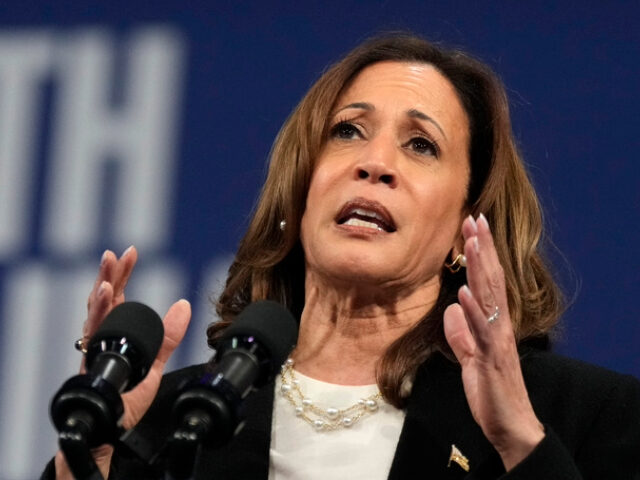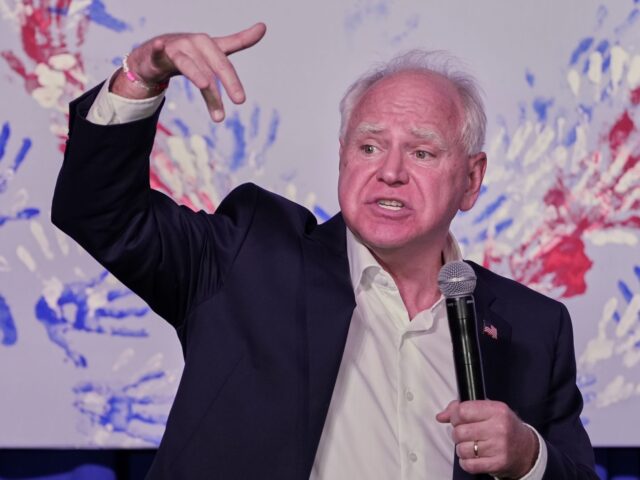from Kitco NEWS
Cheapflation and the Rise of Inflation Inequality in 2021-2023
by Tao Chen, Peter Levell, and Martin O’Connell
CEPR
 Inflation rates soared over the period 2021-2023, driving down households’ real incomes in the UK and other countries. This column uses detailed data on price and spending patterns for groceries to assess the relative impacts of inflation across rich and poor households. Significant differences in grocery price inflation experienced by rich and poor households only emerge once the most disaggregated product definitions are used. Price increases were disproportionately large for individual varieties of products that were initially cheaper (‘cheapflation’), driving up inflation rates for worse-off households.
Inflation rates soared over the period 2021-2023, driving down households’ real incomes in the UK and other countries. This column uses detailed data on price and spending patterns for groceries to assess the relative impacts of inflation across rich and poor households. Significant differences in grocery price inflation experienced by rich and poor households only emerge once the most disaggregated product definitions are used. Price increases were disproportionately large for individual varieties of products that were initially cheaper (‘cheapflation’), driving up inflation rates for worse-off households.
Fed Cuts 0.5%, Gold Makes a New High, and Dollar Confidence Collapses
Gold prices hit new highs amid declining confidence in the USD, as capital flows shift away from the dollar. The Fed’s rate cut sparks concerns over potential election interference.
by Dave Fairtex
Chris Martenson’s Peak Prosperity
 I took a peek down the inflation rabbit hole this week because some folks thought that the tiny increase in Retail Sales was fantastic (because – dropping prices!). Unfortunately, those “dropping prices” metrics were provided by the BLS. John Williams at shadowstats.com provides a CPI that’s calculated using the same method used back in the Carter days. Carter (probably) lost the 1980 election because of the then-15% inflation, so his successors (appear to have) progressively “fixed” inflation calculations so this unfortunate reveal wouldn’t happen again. Call it: government-gaslighting, which has just grown worse over time, as revealed to us by John Williams. Long story short: inflation is massively underestimated by about 6-8% annually, vs calculations used in Carter-1980. As a result, the Fed’s “2% inflation target” is actually a 9% inflation target. Quite literally, “the system” has been busy making sure that “You Will Own Nothing” over the past 20 years. And if you do accidentally own something – cap gains taxes will “fix” the problem. “Sell your Dad’s farm to pay the taxes – to Billy Gates who got even richer off the DeathVax!”
I took a peek down the inflation rabbit hole this week because some folks thought that the tiny increase in Retail Sales was fantastic (because – dropping prices!). Unfortunately, those “dropping prices” metrics were provided by the BLS. John Williams at shadowstats.com provides a CPI that’s calculated using the same method used back in the Carter days. Carter (probably) lost the 1980 election because of the then-15% inflation, so his successors (appear to have) progressively “fixed” inflation calculations so this unfortunate reveal wouldn’t happen again. Call it: government-gaslighting, which has just grown worse over time, as revealed to us by John Williams. Long story short: inflation is massively underestimated by about 6-8% annually, vs calculations used in Carter-1980. As a result, the Fed’s “2% inflation target” is actually a 9% inflation target. Quite literally, “the system” has been busy making sure that “You Will Own Nothing” over the past 20 years. And if you do accidentally own something – cap gains taxes will “fix” the problem. “Sell your Dad’s farm to pay the taxes – to Billy Gates who got even richer off the DeathVax!”
The Yield Curve Before & After the Rate Cut: Why Have Longer-Term Yields Risen since the Rate Cut? Already Priced in? Inflation Concerns as Policy Loosens in a Decent Economy?
by Wolf Richter
Wolf Street
 Mortgage rates also ticked up.
Mortgage rates also ticked up.
The Treasury yield curve is un-inverting piece by piece, but not in the way future homebuyers want: before and since the rate cut, shorter-term Treasury yields have fallen, driven by the Fed’s actual and expected rate cuts; but longer-term Treasury yields and mortgage rates have inched up.
As shorter-term yields drop while longer-term yields rise – or fall more slowly than shorter-term yields – the yield curve un-inverts step by step and eventually enters its normal state where all shorter-term yields are lower than longer-term yields.
But it still has a long way to go before it’s un-inverted all the way, to where shorter-term yields are lower than longer-term yields across the yield curve.
Kamala Harris Sidesteps Economic Reality, Bizarrely Says She Will Lower Costs By Lowering Cost of Necessities
by Hannah Knudsen
Breitbart.com
 Vice President Kamala Harris appeared to be stumped when asked how she would lower the cost of living as president, telling a couple during a Q&A with Oprah Winfrey that she would do so by “bringing down the cost of everyday necessities” despite the fact that the cost of many necessities — including groceries, which she mentioned — have skyrocketed under her leadership.
Vice President Kamala Harris appeared to be stumped when asked how she would lower the cost of living as president, telling a couple during a Q&A with Oprah Winfrey that she would do so by “bringing down the cost of everyday necessities” despite the fact that the cost of many necessities — including groceries, which she mentioned — have skyrocketed under her leadership.
“We really would love to know what your plan is to help lower the cost of living,” the couple asked Harris, who immediately kicked off with a word salad, ignoring the actual question:
Gold Hits Another Record High, but Are We Looking at Deflation or Inflation in the Future?
from King World News
 Today gold has hit another record high, but are we looking at deflation or inflation in the future?
Today gold has hit another record high, but are we looking at deflation or inflation in the future?
September 20 (King World News) – Matthew Piepenburg, partner at VON GREYERZ AG: As a polarized U.S. marches toward a political, financial, and perhaps even military crossroads in the closing months 2024, many feel what George Lucas might otherwise describe as a “disturbance in the force.”
From blow-off market tops, empty political platitudes and an openly broken bond market to debased currencies and large swaths of the planet at war or inching toward escalation, it seems we are juggling aspects of the stupid, the broken, the insane and perhaps even…the evil.
Let’s start with the stupid…
Tim Walz Stumped By Question On Inflation; Repeats Lie About Trump ‘Sales Tax’
by Joel B. Pollak
Breitbart.com
 Minnesota Gov. Tim Walz, the Democratic nominee for vice president, was stumped Tuesday when asked by a reporter to explain what he and Vice President Kamala Harris would do for families struggling financially.
Minnesota Gov. Tim Walz, the Democratic nominee for vice president, was stumped Tuesday when asked by a reporter to explain what he and Vice President Kamala Harris would do for families struggling financially.
In an interview with local Macon, Georgia, CBS affiliate WMAZ, Walz first said that he and Harris understood the problem because they are “middle class.”
[…] He then offered a series of her proposals unrelated to inflation:
I tell them Kamala Harris and I know something about it being middle-class folks. Our family sit at the table trying to pay the bill. We know coming out of the COVID pandemic with prices where they were, that people need to see some relief.
And I think that’s why Kamala Harris has put out a plan — especially around home ownership — making sure we’re building 3 million more affordable homes, making sure we’re making the down payment assistance there.
The Denarius and the Dollar: Price Controls Then and Now
by J.D. Weigel
Mises.org
 Since the response to Covid-19, the preeminent economic concern of the American public has been, simply put, price inflation. In an attempt to curry favor with the electorate, Vice President Kamala Harris recently declared support for price controls to combat high prices, which she attributes to supply chain issues and corporate greed.
Since the response to Covid-19, the preeminent economic concern of the American public has been, simply put, price inflation. In an attempt to curry favor with the electorate, Vice President Kamala Harris recently declared support for price controls to combat high prices, which she attributes to supply chain issues and corporate greed.
Today, it often seems that our country’s scope and knowledge of history is reduced to a few platitudes concerning markets that date back no further than the mid-1930’s, or perhaps the 1920’s. Inflation and currency debasement, however, go much further back. Furthermore, they are often accompanied by attempts to correct them with price controls. This has especially been the case with empires.
In the past year, there was a meme of sorts, where women would be perplexed to find out just how often their husbands, when asked, reflected on the Roman Empire during the course of a week.
Peter Schiff: Like Kamala, the Fed’s “Values Haven’t Changed”
by Peter Schiff
Schiff Sovereign
 The Fed Chairman was flush with praise yesterday over the stupendous state of the US economy.
The Fed Chairman was flush with praise yesterday over the stupendous state of the US economy.
The economy is in a “good place”, he told reporters at a press conference after announcing a 50-basis point (0.5%) interest rate cut. The labor market is “strong”. Inflation is “coming down”. They’re “confident” about the future outlook. Basically, everything is awesome.
But at least a handful of reporters noticed the obvious paradox: if the economy is doing so great, then why are you slashing interest rates?
Typically, central bankers only cut interest rates when the economy is weakening… which certainly doesn’t conform to the Chairman’s effervescent outlook.
Brace for Impact: The Fed’s Panic Cut is a Sign the Worst is Yet to Come
by Sean Ring
Daily Reckoning
 Yesterday, the Federal Open Market Committee (FOMC) shocked most market watchers, including yours truly, with an aggressive 50 basis point cut, a mostly unexpected move. The Fed’s decision, which saw Governor Michelle Bowman dissenting, raises serious questions about the stability of the U.S. economy. The stark contrast between the cut and the rhetoric leading up to the meeting signals more than just a recalibration of monetary policy. It signals fear.
Yesterday, the Federal Open Market Committee (FOMC) shocked most market watchers, including yours truly, with an aggressive 50 basis point cut, a mostly unexpected move. The Fed’s decision, which saw Governor Michelle Bowman dissenting, raises serious questions about the stability of the U.S. economy. The stark contrast between the cut and the rhetoric leading up to the meeting signals more than just a recalibration of monetary policy. It signals fear.
For months, Fed Chair Jerome Powell and his colleagues have emphasized that inflation remains stubborn, necessitating tighter policy for longer. But the sudden 50 bps cut suggests the Fed sees something behind the scenes that has them spooked—and it should have the rest of us spooked, too.
Let’s break down why this move reeks of panic, what Bowman’s dissent tells us, and why this could be the sell signal that stock market bulls desperately want to ignore.
Is There a Secret Ulterior Motive Behind the “Emergency Move” That the Federal Reserve Just Made?
by Michael Snyder
The Economic Collapse Blog
 We aren’t supposed to question anything that the Federal Reserve does. We are just supposed to quietly accept their decisions and move on. Sadly, most Americans don’t even realize that the Federal Reserve has far more power over the economy than anyone else does. We often talk about the “Biden economy” or the “Trump economy”, but the truth is that the Fed is much more responsible for our economic performance than the White House is. So the fact that the Fed just made an “emergency move” that is normally only reserved for times of crisis should deeply alarm all of us. Has the Fed made this move for a secret reason that they aren’t telling us?
We aren’t supposed to question anything that the Federal Reserve does. We are just supposed to quietly accept their decisions and move on. Sadly, most Americans don’t even realize that the Federal Reserve has far more power over the economy than anyone else does. We often talk about the “Biden economy” or the “Trump economy”, but the truth is that the Fed is much more responsible for our economic performance than the White House is. So the fact that the Fed just made an “emergency move” that is normally only reserved for times of crisis should deeply alarm all of us. Has the Fed made this move for a secret reason that they aren’t telling us?
On Wednesday, the Federal Reserve reduced interest rates for the very first time in more than four years…
